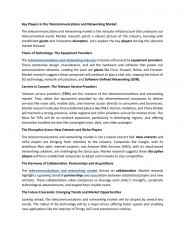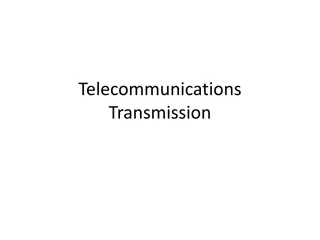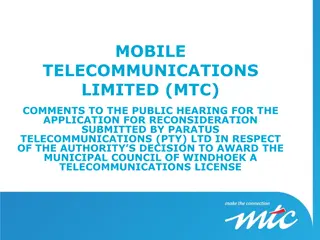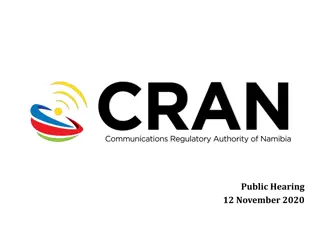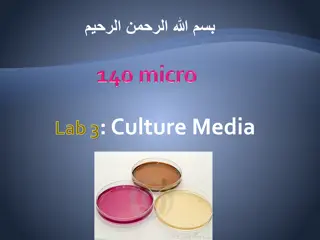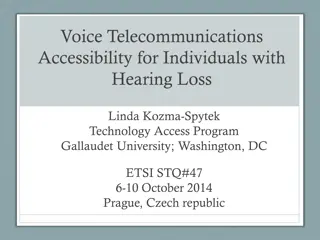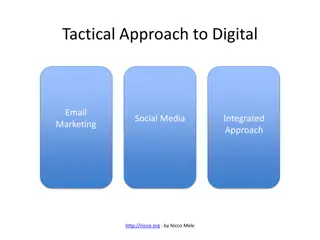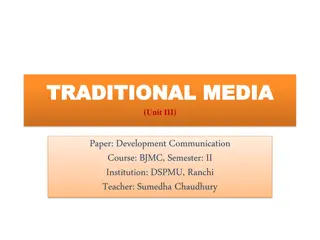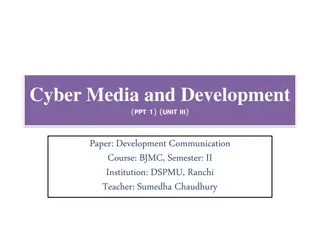TELECOMMUNICATIONS MEDIA
Telecommunications is the electronic transmission of information over distances, including voice calls, data, text, images, and video. It encompasses a range of technologies like fiber optics, satellites, telephones, and the Internet. Components of a telecommunications network include terminals, interconnected computers, links for data transmission, equipment for transmission, and software for message control. The transmission media in telecommunications are classified into guided media (wired) such as twisted pair, coaxial cable, and fiber optic cable, and wireless media like terrestrial microwave, satellite transmission, and radio transmission.
Download Presentation

Please find below an Image/Link to download the presentation.
The content on the website is provided AS IS for your information and personal use only. It may not be sold, licensed, or shared on other websites without obtaining consent from the author. Download presentation by click this link. If you encounter any issues during the download, it is possible that the publisher has removed the file from their server.
E N D
Presentation Transcript
TELECOMMUNICATIONS MEDIA
TELECOMMUNICATIONS Telecommunications are the means of electronic transmission of information over distances. The information may be in the form of voice telephone calls, data, text, images, or video. Modern telecommunications includes several types of long-distance data transmitting technologies such as fiber optics, satellites, telephones, radio broadcasting, TV broadcasting, telegraphs and the Internet.
Components of telecommunications A telecommunications network includes the following components: Terminals for accessing the network. Computers that process information and are interconnected by the network Telecommunications links that form a channel through which information is transmitted from a sending device to a receiving device. Telecommunications equipment that facilitates the transmission of information. Telecommunications software that controls message transmission over the network.
CHANNELS OF TELECOMMUNICATIONS Three of the transmission media are classified as guided media - in which the signal moves along an enclosed path. Guided media require wiring. They include: 1. Twisted pair 2. Coaxial cable 3. Fiber optic cable
CHANNELS OF TELECOMMUNICATIONS Three of the transmission media are classified as wireless media - the signal is broadcast (radiated in many directions) over the air or space and received through an antenna. They include: 1. Terrestrial Microwave 2. Satellite Transmission 3. Radio Transmission
Terrestrial Microwave long-distance telecommunications by means of microwave signals travelling on the surface of the earth. Satellite Transmission form of microwave transmission in which the signal is transmitted by an earth station to a satellite which rebroadcasts the signal to the receiving station. Radio Transmission wireless communications technology that transmits voice or data over the air using a lower frequency band than microwaves.
TYPES OF TELECOMMUNICATIONS Two principal types of telecommunications networks can be distinguished from the point of view of their geographical scope. They are: 1. Local area networks 2. Wide area networks 3. Metropolitan area networks
Local area network (LAN): is a privately owned network that interconnects processors, usually microcomputers, within a building or on a campus site. Wide area network (WAN): is a telecommunications network that covers a large geographical area. Metropolitan area network (MAN): MAN is designed to cover an entire city. It is a telecommunications network that connects several LANs together into a larger network or a single cable.


